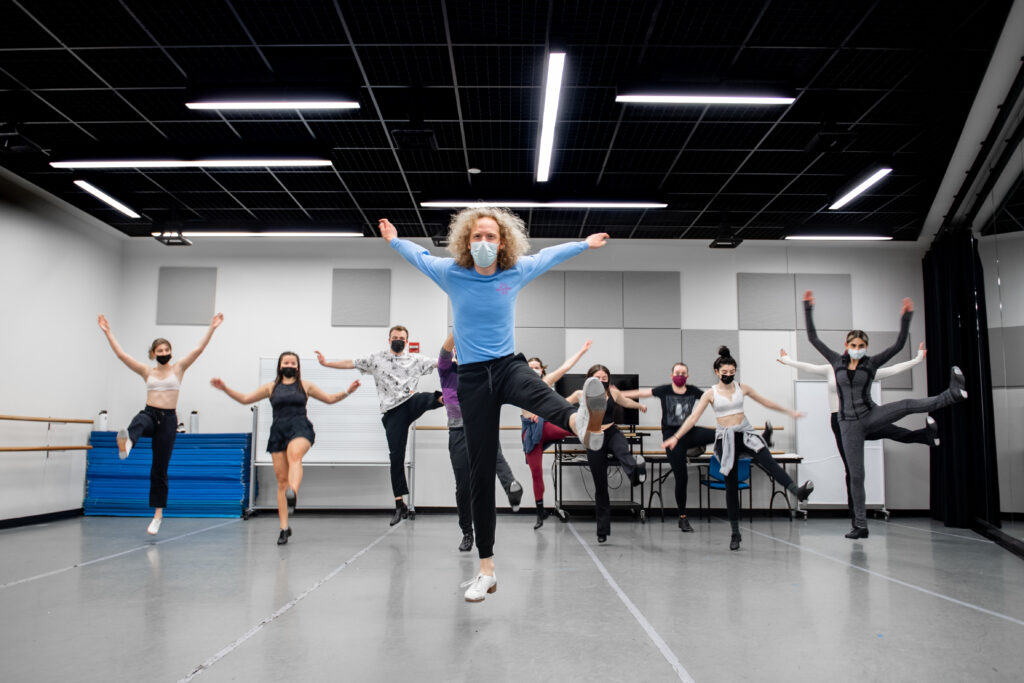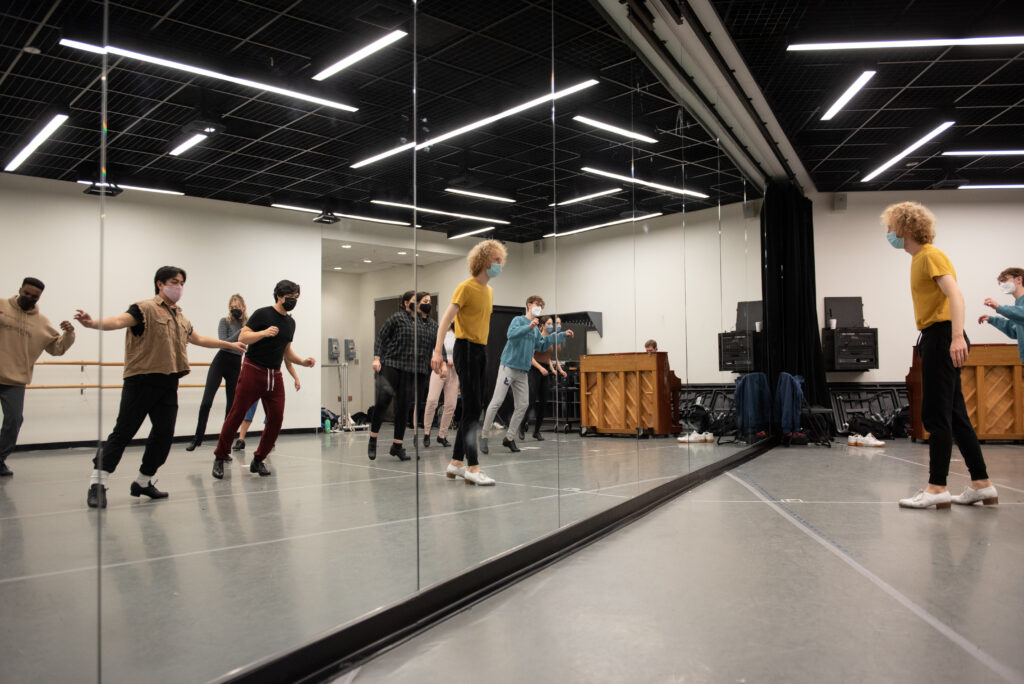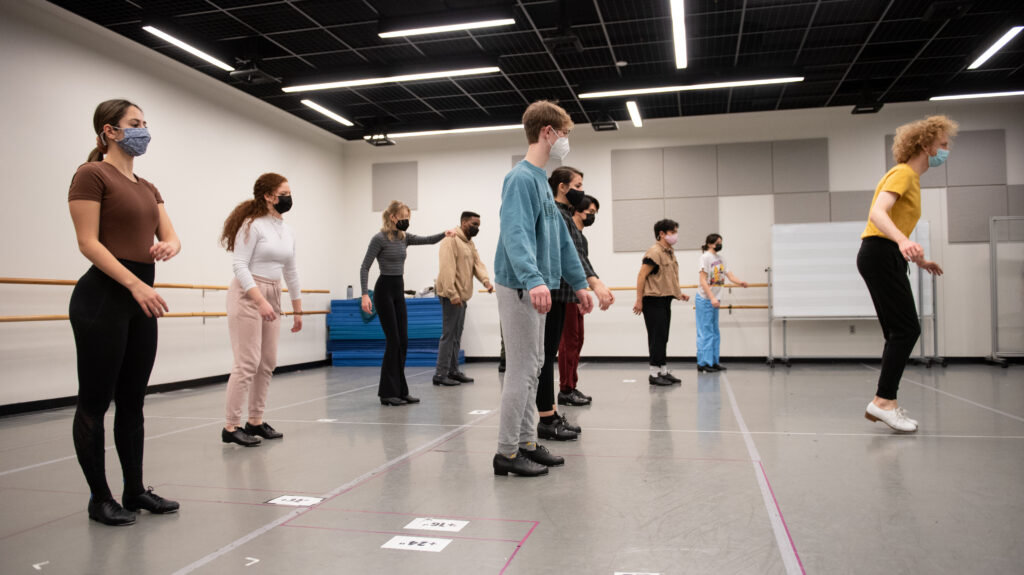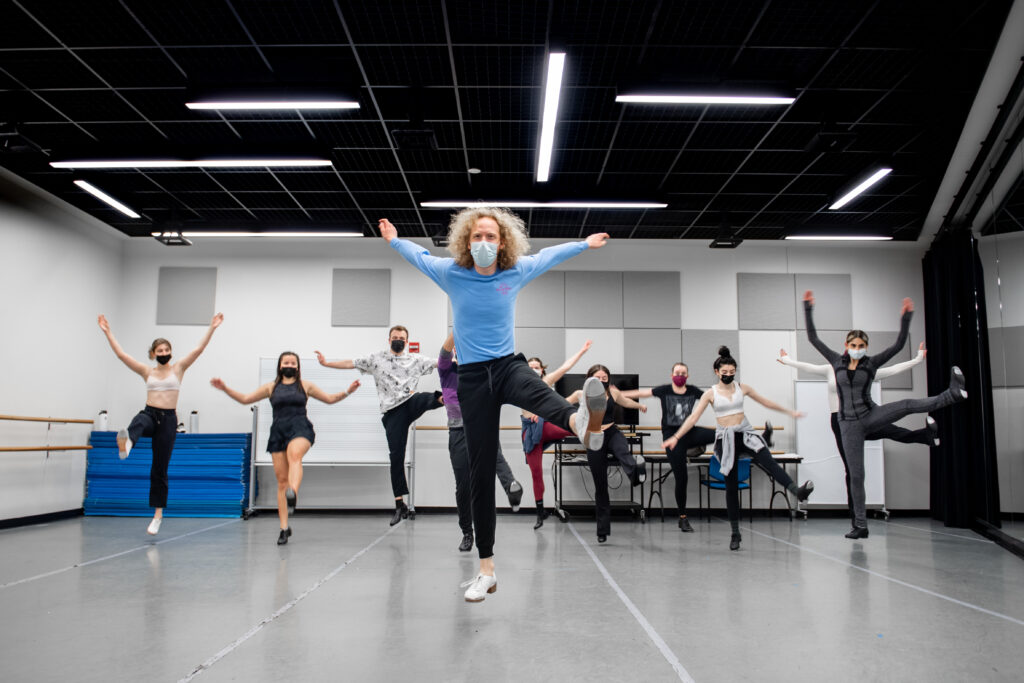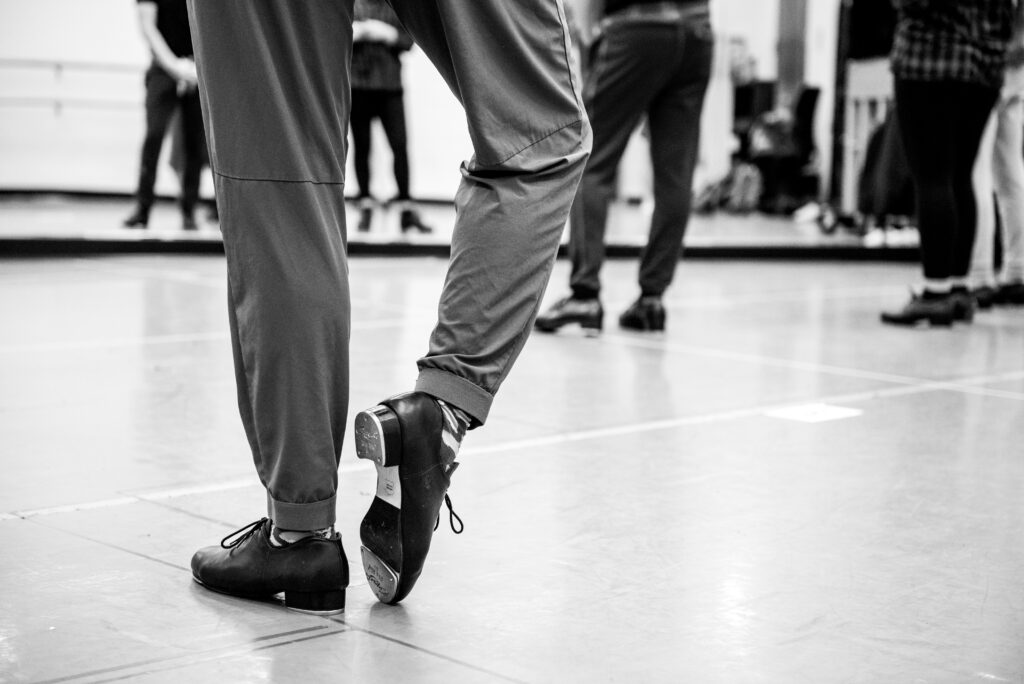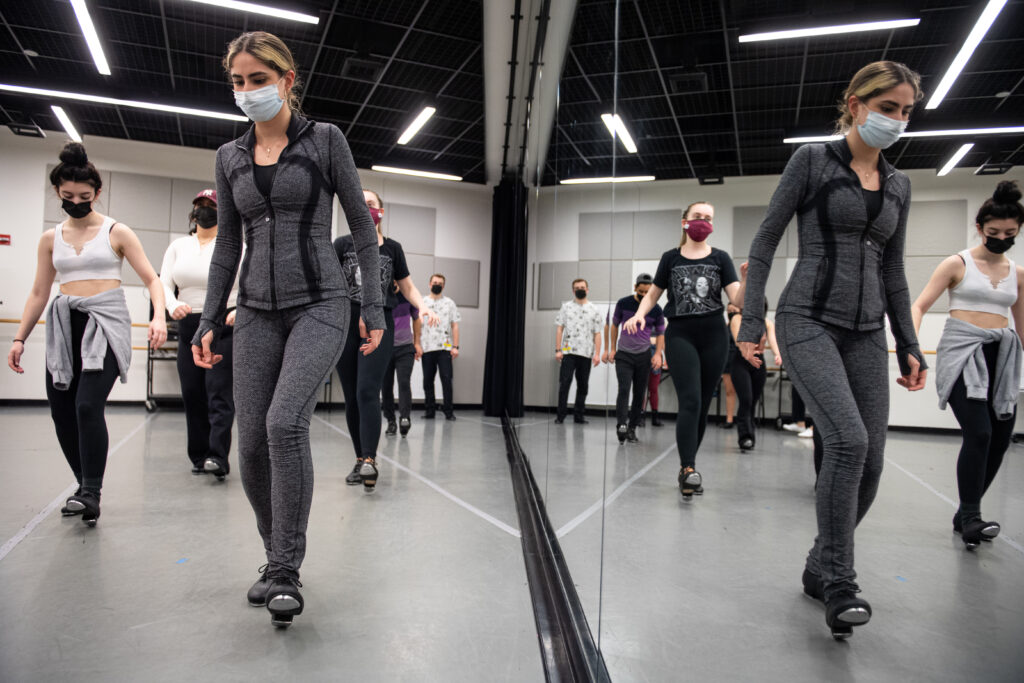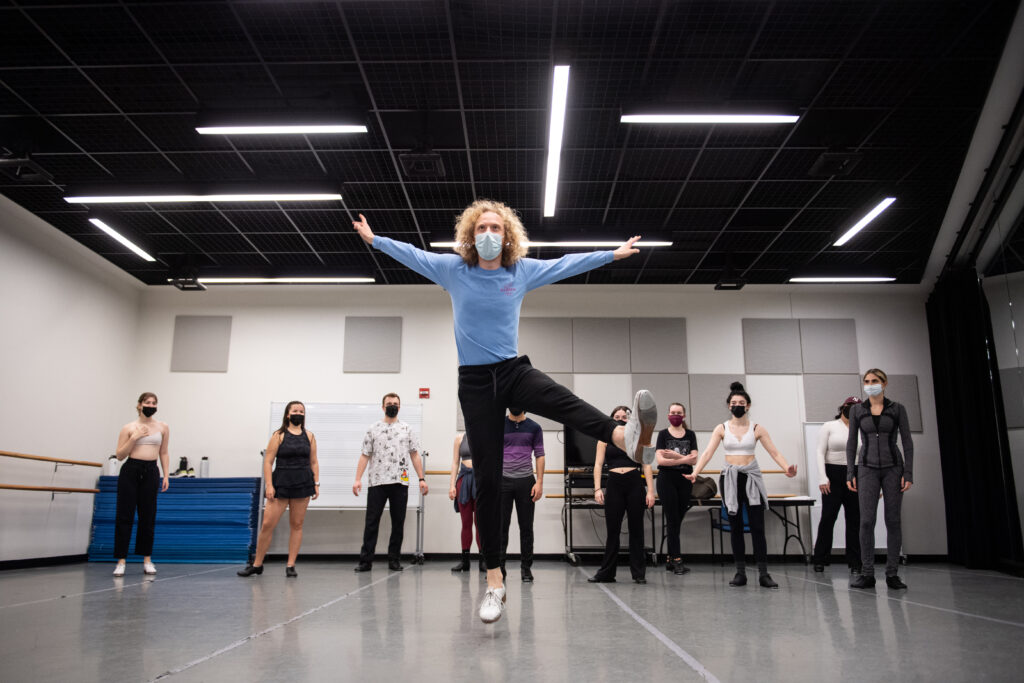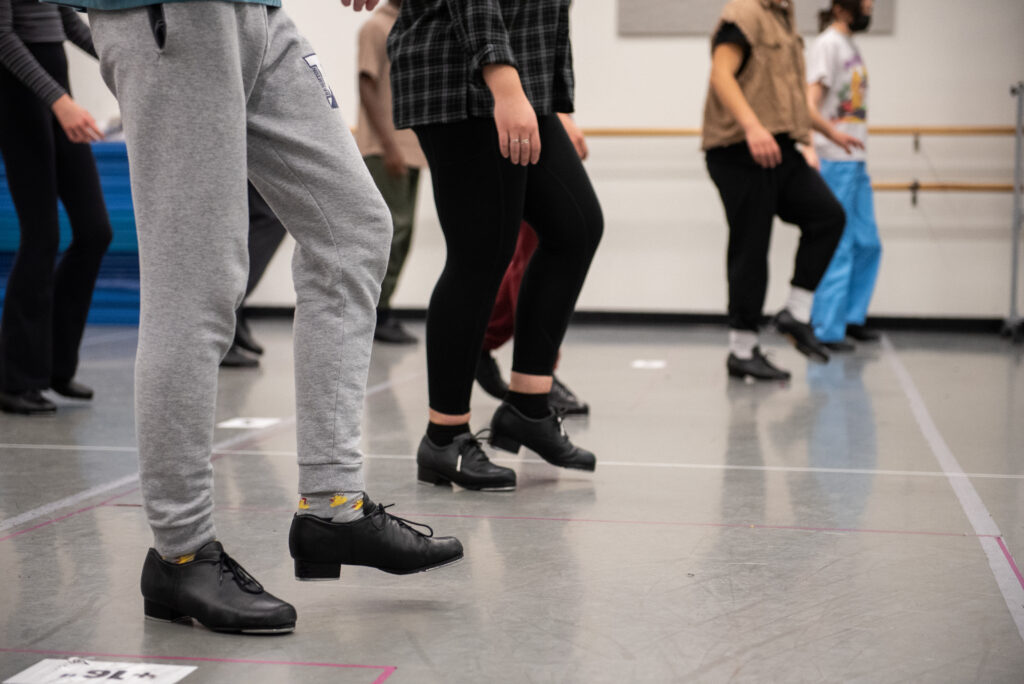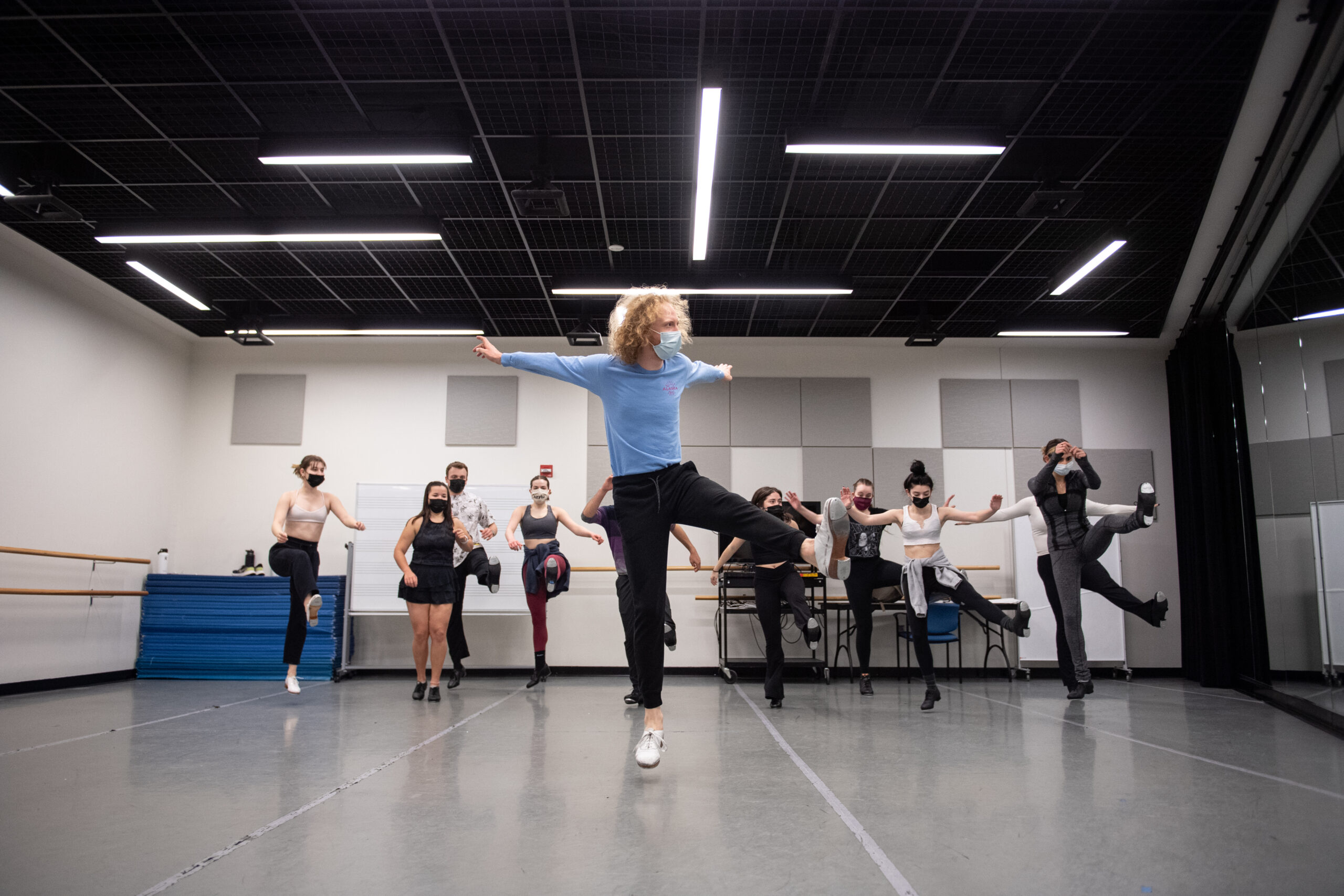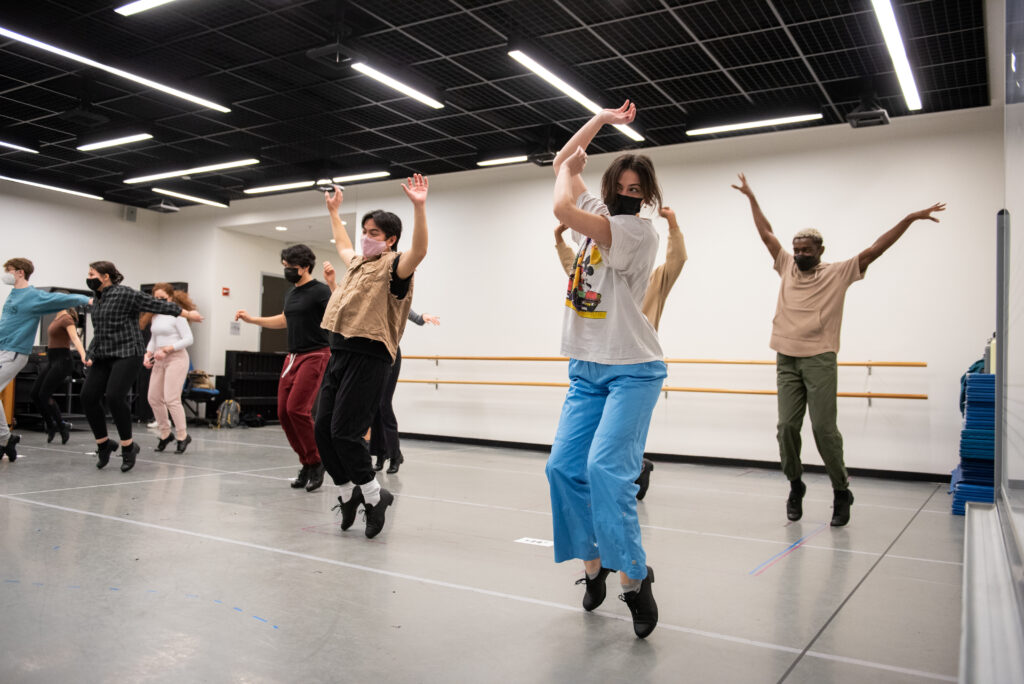Learning Hoofing History Important as Developing Dance Skills in Tap Class
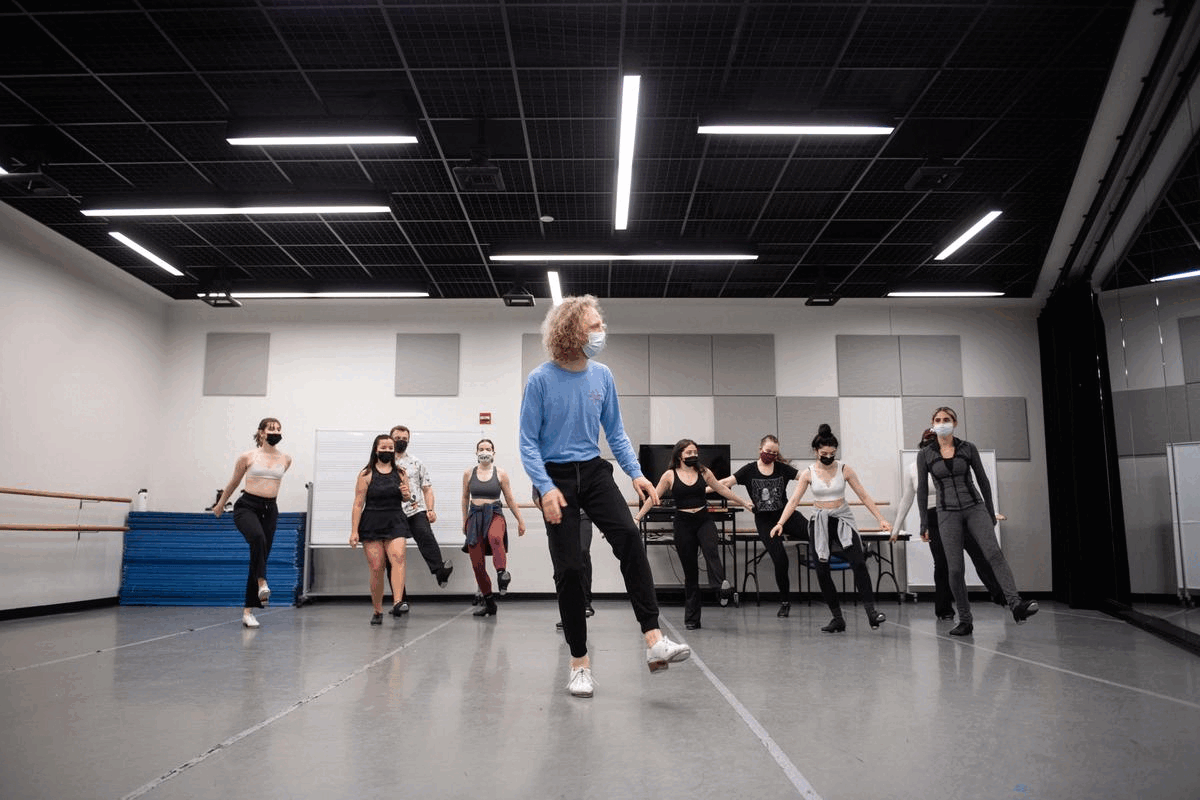
In tap dancing class, learning the historical context of the dance style is just as important as furthering your tapping skills.
“Most people think of Gene Kelly, Shirley Temple, and Fred Astaire,” said Ian Berg, Performing Arts affiliated faculty member. “It’s really a Black art form. It’s important to identify the lineages of tap that bring it to today.”
Tap dancing class is a requirement for all Musical Theatre majors, and this semester, Berg is teaching two tap dancing classes: Introduction to Tap Dancing; and Topics in Dance. Students watch videos of key practitioners and documentaries to better understand the history and artistry of the art form.
“We need them to know that tap dancing is really fun, playful, and wonderful. It can be serious, it can be sad, it can be all types of things,” said Berg. “Tap dancing is filled with a lot of nuance, it’s really important to understand where this comes from.”
All photos by Derek Palmer for Emerson College
Berg fell in love with tap dancing when he was younger, and is a founding member of the tap company Subject: Matter. His dancing style is influenced by growing up in Chicago and dancing with a group called M.A.D.D. Rhythms. Their style is really heavy on improvisation and building your own dance voice.
“It’s sort of a mix of hard-hitting tap dancing in Chicago and creating your new own rhythms,” said Berg. “It’s about particular tap dancing that developed in Chicago in the early 2000s in the style of Leon Collins and Diane Walker.”
Berg has had the pleasure of learning Collins’ repertoire from working with Walker the last several years. Along with Collins and Walker, Berg said his favorite tap dancers include Jimmy Slyde, Baby Laurence, and Chuck Green.
His favorites are incorporated into his own style and Subject: Matter. Berg said there are two main objectives of the company: getting young people interested in tap dancing, and creating more work for tap dancers.
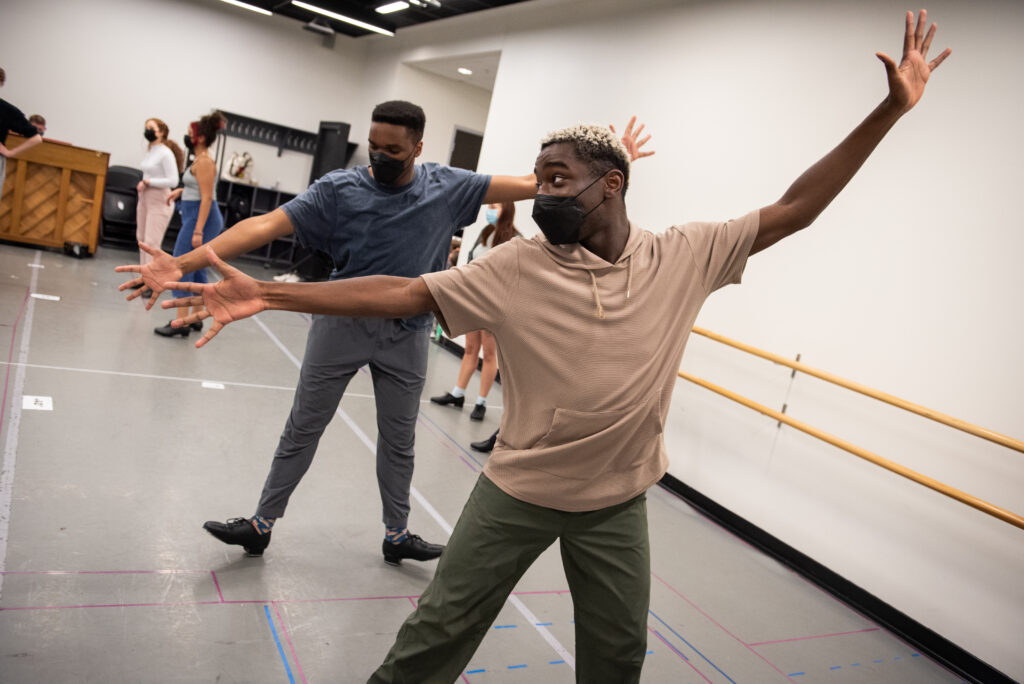
“We work on material that is more overtly connected to where young people are at,” said Berg. “Also, at heart, it’s a labor thing for more paid gigs. It’s really hard to find work tap dancing without supplemental income.”
There has been a larger interest in tap dancing in recent years thanks to particular television shows and musicals, said Berg.
Tapping Tyros to Habitual Hoofers
Berg’s students’ tap experience run the gamut. Some came to college with tap shoes, and others go out and buy their first pair.
“It’s a fun challenge to give everybody a little bit of what they’re looking for to keep everyone interested,” said Berg.
Berg’s goal is for every student to clearly articulate with their feet whatever rhythms they want, at whatever speed they choose.
“I want all their sounds to be in check. Flaps and shuffles, cramp rolls, different sequences, transfers of weight,” said Berg. “It’s geared to being able to walk into an audition. They’re learning basic vocabulary and putting together bits of choreography and improvisational ideas.”
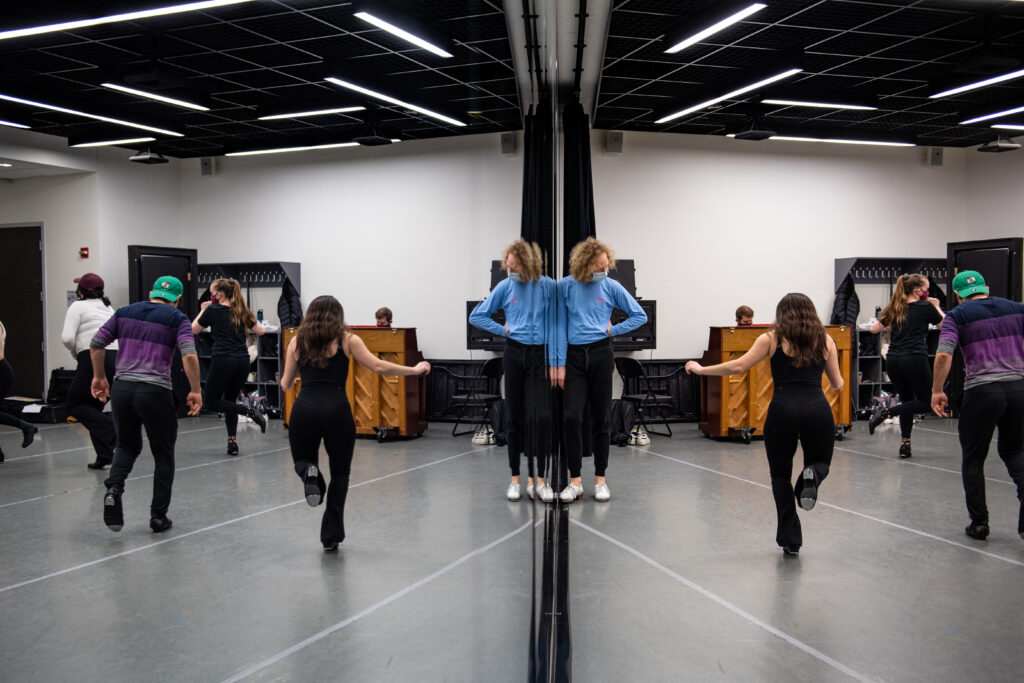
Throughout the class, students learn the forms and variations of tap steps from different time periods, including from vaudeville days to modern times.
“It’s a lot like a language course. It’s not just learning prefabricated sentences, but also speaking your own choreography or improvisations,” said Berg. “It’s about taking these words you’re learning and not just using them to understand what they’re saying when tap dancing, but also understanding how to speak on your own.”
Berg said critiques of student work may include instructing a student to put their weight a certain way or a reminder to do a step. And students are not graded with a Manichean view.
“To me the spirit of the art form isn’t about assessment. If you’re showing up, demonstrating you’re practicing, and really giving an effort, you’re going to get an A in the class,” said Berg. “It’s not really about me grading someone’s ability to tap dance, because we have so many different levels of skill in the class.”
Categories
